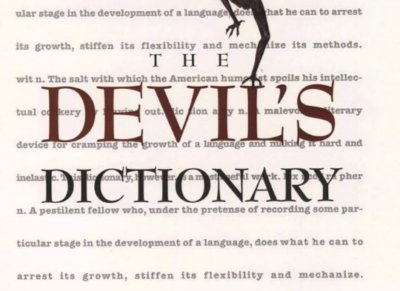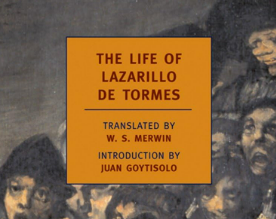91 Results with the "Satire" genre
Adventure Fiction (1164)
Biography (435)
Business & Finance (1)
Children's Literature (124)
Comics (6)
Culture (51)
Drama (123)
Dystopian (29)
Fable (86)
Fantasy (1132)
Fantasy (203)
Fiction (1010)
Finance (1)
Gothic Fiction (12)
Historical Fiction (615)
History (122)
Horror (56)
Lifestyle (36)
Literary (404)
Literary Fiction (207)
Memoir (113)
Mystery (422)
Non-fiction (87)
Novel (549)
Paranormal Fiction (96)
Philosophical (182)
Philosophy (45)
Poetry (249)
Political Fiction (14)
Politics (42)
Practical (32)
Psychological (4)
Psychological Thriller (108)
Relationship (6)
Romance Novel (716)
Romantic Melodrama (14)
Science (46)
Science Fiction (345)
Self-help (68)
Society (65)
Society (2)
Spiritual Growth (1)
story (2)
Thriller (704)
True Crime (56)
view (11)
Women's Fiction (2)
Young Adult (233)
-
Chapter
Chapter G
 Chapter G opens with a sharp commentary on the Gallows, not just as a structure of justice, but as a morbid stage where the condemned briefly becomes the center of attention. Bierce reduces its grim function to theatrical irony, describing how society transforms punishment into performance. The accompanying verse adds that the noblest death is one delivered with absolute stillness—suggesting that dignity in the face of death may be the last illusion granted to those society condemns. By framing execution…
Chapter G opens with a sharp commentary on the Gallows, not just as a structure of justice, but as a morbid stage where the condemned briefly becomes the center of attention. Bierce reduces its grim function to theatrical irony, describing how society transforms punishment into performance. The accompanying verse adds that the noblest death is one delivered with absolute stillness—suggesting that dignity in the face of death may be the last illusion granted to those society condemns. By framing execution…-
82.1 K • Ongoing
-
-
Chapter
Chapter F
 Chapter F begins with Bierce’s playful critique of the mythical Fairy, portrayed not as a symbol of innocence but as a mischievous relic of outdated belief systems. He recalls how laws once protected these fictional beings, illustrating the absurd lengths to which societies have gone to defend the imaginary. By invoking their reported appearances in the 19th century, Bierce highlights the human tendency to embrace superstition, even when faced with advancing reason. His depiction draws attention to how…
Chapter F begins with Bierce’s playful critique of the mythical Fairy, portrayed not as a symbol of innocence but as a mischievous relic of outdated belief systems. He recalls how laws once protected these fictional beings, illustrating the absurd lengths to which societies have gone to defend the imaginary. By invoking their reported appearances in the 19th century, Bierce highlights the human tendency to embrace superstition, even when faced with advancing reason. His depiction draws attention to how…-
82.1 K • Ongoing
-
-
Chapter
Chapter E
 Chapter E opens with a humorous yet insightful look at Eating, defined by Bierce as the successful coordination of many bodily functions, distinguishing between mere consumption and the true enjoyment of a meal. This contrast highlights how the physical act of nourishment often lacks the pleasure associated with fine dining. Through a witty anecdote about the gastronome Brillat-Savarin, Bierce sets the tone for his exploration of ordinary acts, revealing their deeper cultural and emotional layers. The…
Chapter E opens with a humorous yet insightful look at Eating, defined by Bierce as the successful coordination of many bodily functions, distinguishing between mere consumption and the true enjoyment of a meal. This contrast highlights how the physical act of nourishment often lacks the pleasure associated with fine dining. Through a witty anecdote about the gastronome Brillat-Savarin, Bierce sets the tone for his exploration of ordinary acts, revealing their deeper cultural and emotional layers. The…-
82.1 K • Ongoing
-
-
Chapter
Chapter D
 Chapter D sets the tone with the redefinition of Damn, a word that Bierce cleverly allows to shift in meaning depending on who defines it—be it theologian, philosopher, or common man. This ambiguity allows him to satirize how language, especially in moral contexts, is shaped more by perception than principle. Bierce uses the term to mock not just religious doctrine, but the human tendency to tailor judgment for convenience. Through this lens, condemnation becomes a flexible tool used selectively. His wit…
Chapter D sets the tone with the redefinition of Damn, a word that Bierce cleverly allows to shift in meaning depending on who defines it—be it theologian, philosopher, or common man. This ambiguity allows him to satirize how language, especially in moral contexts, is shaped more by perception than principle. Bierce uses the term to mock not just religious doctrine, but the human tendency to tailor judgment for convenience. Through this lens, condemnation becomes a flexible tool used selectively. His wit…-
82.1 K • Ongoing
-
-
Chapter
Chapter C
 Chapter C opens with Bierce’s knack for blending satire and sharp observation, starting with Caaba, a stone linked to Abraham that embodies religious ambiguity and human folly. By connecting it to the story of Babel, Bierce hints that divine worship often conceals confusion and vanity, turning sacred symbols into reminders of human error. This sets the stage for a series of definitions that unravel accepted meanings to reveal underlying absurdities in culture and belief. His humor highlights how even…
Chapter C opens with Bierce’s knack for blending satire and sharp observation, starting with Caaba, a stone linked to Abraham that embodies religious ambiguity and human folly. By connecting it to the story of Babel, Bierce hints that divine worship often conceals confusion and vanity, turning sacred symbols into reminders of human error. This sets the stage for a series of definitions that unravel accepted meanings to reveal underlying absurdities in culture and belief. His humor highlights how even…-
82.1 K • Ongoing
-
-
Chapter
Chapter B
 Chapter B begins with a look at Baal, a deity once worshipped across various ancient civilizations, often symbolizing power and natural forces. Bierce does not simply define Baal as a figure of mythology; he connects it to the confusion born of humanity’s attempts to build structures—literal and ideological—that reach too far. By referencing the story of Babel, he draws a line between the ambition to touch the divine and the chaos that follows. The implication is that veneration often disguises…
Chapter B begins with a look at Baal, a deity once worshipped across various ancient civilizations, often symbolizing power and natural forces. Bierce does not simply define Baal as a figure of mythology; he connects it to the confusion born of humanity’s attempts to build structures—literal and ideological—that reach too far. By referencing the story of Babel, he draws a line between the ambition to touch the divine and the chaos that follows. The implication is that veneration often disguises…-
82.1 K • Ongoing
-
-
Chapter
Chapter A
 Chapter A unfolds with Bierce’s familiar edge, starting with Abasement, which he defines not as humility, but as calculated submission—particularly in contexts of employment or authority. Rather than depicting it as a virtue, he recasts it as a social strategy, where people learn to shrink themselves in order to survive power dynamics. The sharpness of the definition cuts through the illusion of dignity in hierarchy. For Bierce, the act of lowering oneself is not noble, but necessary in systems built…
Chapter A unfolds with Bierce’s familiar edge, starting with Abasement, which he defines not as humility, but as calculated submission—particularly in contexts of employment or authority. Rather than depicting it as a virtue, he recasts it as a social strategy, where people learn to shrink themselves in order to survive power dynamics. The sharpness of the definition cuts through the illusion of dignity in hierarchy. For Bierce, the act of lowering oneself is not noble, but necessary in systems built…-
82.1 K • Ongoing
-
-
Story
The Devil’s Dictionary
 The Devil’s Dictionary by Ambrose Bierce is a satirical and darkly humorous collection of witty, cynical definitions that expose the hypocrisies and absurdities of human nature, society, and language.
The Devil’s Dictionary by Ambrose Bierce is a satirical and darkly humorous collection of witty, cynical definitions that expose the hypocrisies and absurdities of human nature, society, and language.-
5.0 K • Nov 8, '24
-
5.2 K • Nov 8, '24
-
4.1 K • Nov 8, '24
-
-
Chapter
Bibliography
 Bibliography listings often reveal more than just sources—they map the intellectual landscape that surrounds a text. In the case of Lazarillo de Tormes, the bibliography reflects a century-long conversation across academic disciplines, national borders, and literary frameworks. From early 20th-century philological studies to mid-century cultural analyses, these works emphasize the novel’s transformation from a once-censored book to a celebrated cornerstone of Spanish literature. Scholars such as…
Bibliography listings often reveal more than just sources—they map the intellectual landscape that surrounds a text. In the case of Lazarillo de Tormes, the bibliography reflects a century-long conversation across academic disciplines, national borders, and literary frameworks. From early 20th-century philological studies to mid-century cultural analyses, these works emphasize the novel’s transformation from a once-censored book to a celebrated cornerstone of Spanish literature. Scholars such as…-
108.4 K • Ongoing
-
-
 Chapter XVI: How Lazaro Decided to Marry Again begins with a glimpse into Lazaro’s renewed hope, sparked by an unexpected shift in his luck. After years of enduring hardship, he finds himself no longer driven solely by survival but by the idea that perhaps destiny has finally turned in his favor. He reflects on the ironies of life, where the undeserving seem to rise effortlessly while the thoughtful and cautious are often left with nothing. His belief that fate has wronged him repeatedly is a theme that…
Chapter XVI: How Lazaro Decided to Marry Again begins with a glimpse into Lazaro’s renewed hope, sparked by an unexpected shift in his luck. After years of enduring hardship, he finds himself no longer driven solely by survival but by the idea that perhaps destiny has finally turned in his favor. He reflects on the ironies of life, where the undeserving seem to rise effortlessly while the thoughtful and cautious are often left with nothing. His belief that fate has wronged him repeatedly is a theme that…-
108.4 K • Ongoing
-
- Previous 1 2 3 4 … 10 Next
